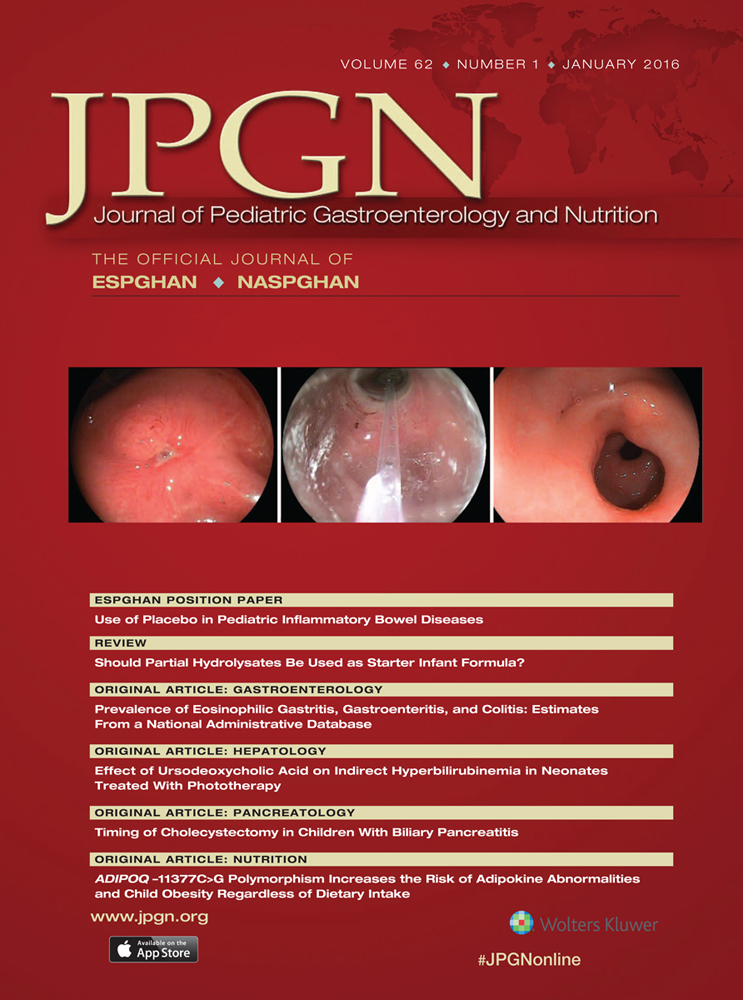Invited Commentaries
Need for Infant Formula
Robert D. Baker,
Susan S. Baker,
Corresponding Author
Robert D. Baker
Digestive Diseases and Nutrition Center, Women and Children's Hospital of Buffalo, State University of New York, University at Buffalo, Buffalo
Address correspondence and reprint requests to Robert D. Baker, MD, PhD, 219 Bryant St, Buffalo, NY 14222 (e-mail: [email protected]).Search for more papers by this authorSusan S. Baker
Digestive Diseases and Nutrition Center, Women and Children's Hospital of Buffalo, State University of New York, University at Buffalo, Buffalo
Search for more papers by this authorRobert D. Baker,
Susan S. Baker,
Corresponding Author
Robert D. Baker
Digestive Diseases and Nutrition Center, Women and Children's Hospital of Buffalo, State University of New York, University at Buffalo, Buffalo
Address correspondence and reprint requests to Robert D. Baker, MD, PhD, 219 Bryant St, Buffalo, NY 14222 (e-mail: [email protected]).Search for more papers by this authorSusan S. Baker
Digestive Diseases and Nutrition Center, Women and Children's Hospital of Buffalo, State University of New York, University at Buffalo, Buffalo
Search for more papers by this authorThe authors report no conflicts of interest.

REFERENCES
- 1.Neifert MR. Prevention of breastfeeding tragedies. Pediatr Clin North Am 2001; 48: 273–297.
- 2.Lönnerdal B, Hernell O. An opinion on “staging” of infant formula: a developmental perspective on infant feeding. J Pediatr Gastroenterol Nutr 2016; 62: 9–21.
- 3.Montalto MB, Benson JD, Martinez GA. Nutrient intakes of formula-fed infants and infants fed cow's milk. Pediatrics 1985; 75: 343–351.
- 4.Martinez GA, Ryan AS, Malec DJ. Nutrient intakes of American infants and children fed cow's milk or infant formula. Am J Dis Child 1985; 139: 1010–1018.
- 5. Centers for Disease Control and Prevention. Prevalence of coronary heart disease--United States 2006-2010. MMWR Morb Mortal Wkly Rep 2011; 60: 1377–1412.
- 6.Ogden CL, Carroll MD, Kit BK, et al. Prevalence of obesity and trends in body mass index among US children and adolescents, 1999-2010. JAMA 2012; 307: 483–490.
- 7. Centers for Disease Control and Prevention. U. S. breastfeeding rates continue to rise. http://www.cdc.gov/media/releases/2013/p0731-breastfeeding-rates.html. Published July 31, 2013. Accessed June 1, 2015.
- 8.Grummer-Strawn LM, Reinold C, Krebs NF, et al. Use of World Health Organization and CDC growth charts for children aged 0-59 months in the United States. MMWR Recomm Rep 2010; 59 (RR-9): 1–15.
- 9.Gera T, Sachdev HP. Effect of iron supplementation on incidence of infectious illness in children: systematic review. BMJ 2002; 325: 1142.
- 10.Singhal A, Morley R, Abbott R, et al. Clinical safety of iron-fortified formulas. Pediatrics 2000; 105: E38.
- 11.Ziegler EE, Nelson SE, Jeter JM. Iron supplementation of breastfed infants. Nutr Rev 2011; 69 (suppl 1): S71–S77.
- 12.Fomon SJ, Ziegler EE, Nelson SE, et al. Infant formula with protein-energy ratio of 1.7 g/100 kcal is adequate but may not be safe. J Pediatr Gastroenterol Nutr 1999; 28: 495–501.
- 13.Abrams SA, Hawthorne KM, Pammi M. A systematic review of controlled trials of lower-protein or energy-containing infant formulas for use by healthy full-term infants. Adv Nutr 2015; 6: 178–188.
- 14.Burkhardt MCB, Kahn AF, Klein RS, et al. Are our babies hungry? food security among infants in urban clinics. Clin Pediatr 2012; 51: 238–243.
- 15.Teitelbaum JE, Lagmay JP. Familiarity of pediatricians with different commercially available neonatal and infant formulas. Clin Pediatr (Phila) 2007; 46: 418–423.
- 16.Rovira M, Ferrer J. Weaning gives beta cells license to regenerate. Dev Cell 2015; 32: 531–532.




